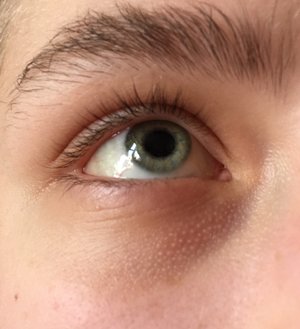Discover the Top Milia Treatments for You
Milia are small, white cysts that typically appear on the face, particularly around the eyes and cheeks. They are often mistaken for whiteheads, but unlike acne, milia are not caused by clogged pores. Instead, they develop when keratin—a protein found in skin—becomes trapped beneath the surface. While Milia Treatments in Dubai are harmless, many people seek treatment for cosmetic reasons. Fortunately, there are various effective milia treatments available that can help you achieve clear, smooth skin.

Understanding Milia
Milia can occur at any age, though they are most common in newborns and adults. They often form after skin trauma, such as burns, rashes, or blistering. Unlike other skin conditions, milia typically do not go away on their own and can be persistent. Understanding the nature of milia is essential for selecting the most suitable treatment options.
The treatment you choose will depend on several factors, including the severity of your milia, your skin type, and your personal preferences. Consulting a dermatologist is recommended to determine the best course of action for your specific situation.
At-Home Remedies
For mild cases of milia, several at-home remedies can help reduce their appearance:
1. Exfoliation
Regular exfoliation can help remove dead skin cells, preventing the formation of new milia. Gentle exfoliating scrubs or chemical exfoliants containing ingredients like salicylic acid or glycolic acid can be effective. However, be cautious not to over-exfoliate, as this can irritate the skin and worsen the condition.
2. Retinoids
Topical retinoids, derived from Vitamin A, promote cell turnover and can help reduce milia over time. Over-the-counter options like retinol are available, but stronger prescription retinoids may be necessary for more stubborn cases. Always start with a lower concentration to assess your skin's tolerance.
3. Moisturizing
Keeping your skin hydrated can help prevent the formation of milia. Look for non-comedogenic moisturizers that won't clog pores. Ingredients like hyaluronic acid or glycerin are excellent choices for hydration without the risk of worsening milia.
4. Steam Treatments
Steam treatments can help open up pores and facilitate the removal of trapped keratin. You can create a DIY steam facial at home by boiling water and leaning over it, covering your head with a towel to trap the steam. Follow this with gentle exfoliation.
Professional Treatments
If at-home remedies don't provide the desired results, several professional treatments can effectively remove milia.
5. Extraction
Dermatologists can perform a simple extraction to remove milia using a sterile tool. This process involves making a small incision and gently extracting the cysts. It is a quick procedure with minimal discomfort, and it can provide immediate results.
6. Chemical Peels
Chemical peels involve applying a solution to the skin to exfoliate and remove the outer layer. This treatment can help reduce the appearance of milia and improve skin texture. Depending on the type of peel used, you may require several sessions to achieve optimal results.
7. Laser Treatment
Laser treatments can effectively target and remove milia without damaging the surrounding skin. This method uses concentrated light energy to break down the keratin buildup, allowing for easier extraction. Laser treatment is especially useful for larger or more stubborn milia.
8. Cryotherapy
Cryotherapy involves freezing the milia using liquid nitrogen. This method effectively destroys the cysts and can provide quick results. It's typically used for larger or more persistent milia.
Lifestyle and Prevention
Preventing milia can often be achieved through proper skin care practices. Here are some tips to keep your skin clear:
9. Gentle Skin Care Products
Avoid harsh skin care products that can irritate the skin. Look for gentle cleansers and non-comedogenic products to reduce the risk of clogged pores and skin irritation.
10. Sun Protection
Protecting your skin from the sun can help prevent skin damage and the formation of milia. Use broad-spectrum sunscreen with at least SPF 30 every day, even on cloudy days, and reapply regularly.
11. Healthy Diet
A balanced diet rich in vitamins and antioxidants can support skin health. Incorporate foods high in Vitamin A, C, and E, as well as omega-3 fatty acids, to help maintain clear skin.
12. Regular Skin Checks
Regular visits to a dermatologist can help monitor your skin's condition and address any concerns early on. Early intervention can prevent milia from becoming a persistent issue.
When to Seek Help
While milia are generally harmless, if you notice any sudden changes in your skin or if the milia become painful, inflamed, or infected, it's essential to consult a dermatologist. They can provide a thorough evaluation and recommend appropriate treatments.
Conclusion
Milia can be a cosmetic concern for many, but with the right treatments and preventive measures, you can achieve smoother, clearer skin. Whether you opt for at-home remedies or professional treatments, understanding your options is crucial for managing milia effectively. Always consult with a dermatologist to determine the best treatment plan tailored to your unique skin needs. Embrace the journey toward clear skin and discover the confidence that comes with it!